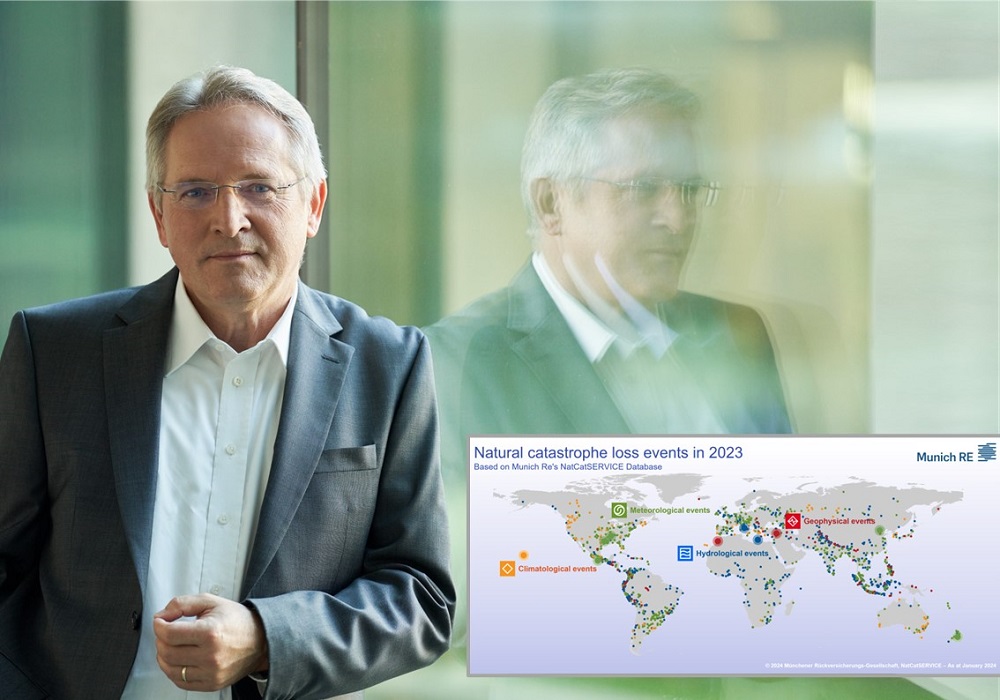Climate change and weather catastrophes – How are the probabilities of damage changing and how do we deal with them?

Munich, 10 April 2024
The average temperature of the Earth (atmosphere and oceans) has risen between 1.2 and 1.4 degrees over the past 150 years. As a result, extreme events are becoming more frequent – and so is the damage they cause. Ernst Rauch, Chief Climatologist and Chief Geoscientist of the insurance company Munich Re, made this clear at acatech am Dienstag, on 12 March. Almost 600 guests attended the online event, which was organised in cooperation with vhs.wissen live.
In his welcoming address, acatech President Jan Wörner first discussed the effects of global climate change. He noted that climate change and other global challenges always have to be tackled in a similar way. The first step is always to “discover” a problem, followed by the second step of assessing and measuring it. Then you have to raise public awareness, and finally you have to focus on how to tackle the problem.
Global damage from extreme weather events
In the keynote speech that followed, Ernst Rauch, Chief Climatologist and Chief Geoscientist at Munich Re, went into more detail. His company, which specialises in reinsurance, recognised as early as the 1970s that damage patterns were changing as a result of climate change.
Watch the presentation (video) by Ernst Rauch, Chief Climatologist and Chief Geoscientist at Munich Re, Head of Climate Change Solutions Development, on Climate change and weather catastrophes – How are the probabilities of damage changing and how do we deal with them?
Running time: 54 minutes 26 seconds
In his review of the year 2023, Ernst Rauch looks at the most severe – and costly – natural catastrophes: The earthquakes in Syria and Turkey were by far the most expensive, followed by storms and hurricanes in the US. Damage caused by natural catastrophes has increased significantly worldwide since 1980. In recent years, the insurance industry has been paying out around one hundred billion dollars a year in claims, which, according to Ernst Rauch, is the “new normal”. The proportion of uninsured damage from natural catastrophes varies considerably from region to region: while in industrialized countries the insurance industry bears a large share of the overall economic losses resulting from weather- and climate-related extremes, this is hardly the case in developing and emerging countries in Asia and Africa. According to Ernst Rauch, non-life insurance is a key factor in stabilising economies. This is because any damage and losses not covered by the insurance industry have to be paid for by the population, the state or international aid funds.
What is the role of climate change?
Temperature recordings have been available since about 1850, providing empirical data that can be used to assess climate change. Around the same time, industrialisation began and with it a significant increase in anthropogenic emissions of greenhouse gases such as carbon dioxide and methane. Temperature recordings from 1850 to 2023 show that 2023 was the warmest year on record. Over the past 150 years, the global average temperature has risen between 1.2 and 1.4 degrees, leading to an increase in the likelihood of extreme temperatures and weather extremes.
According to Ernst Rauch, even a seemingly small increase in average temperature of 1 degree could lead to a three- to fourfold increase in the likelihood of extreme weather events. It is therefore important, not only for the insurance industry, but for society as a whole, to address climate change on an ongoing and intensive basis.





